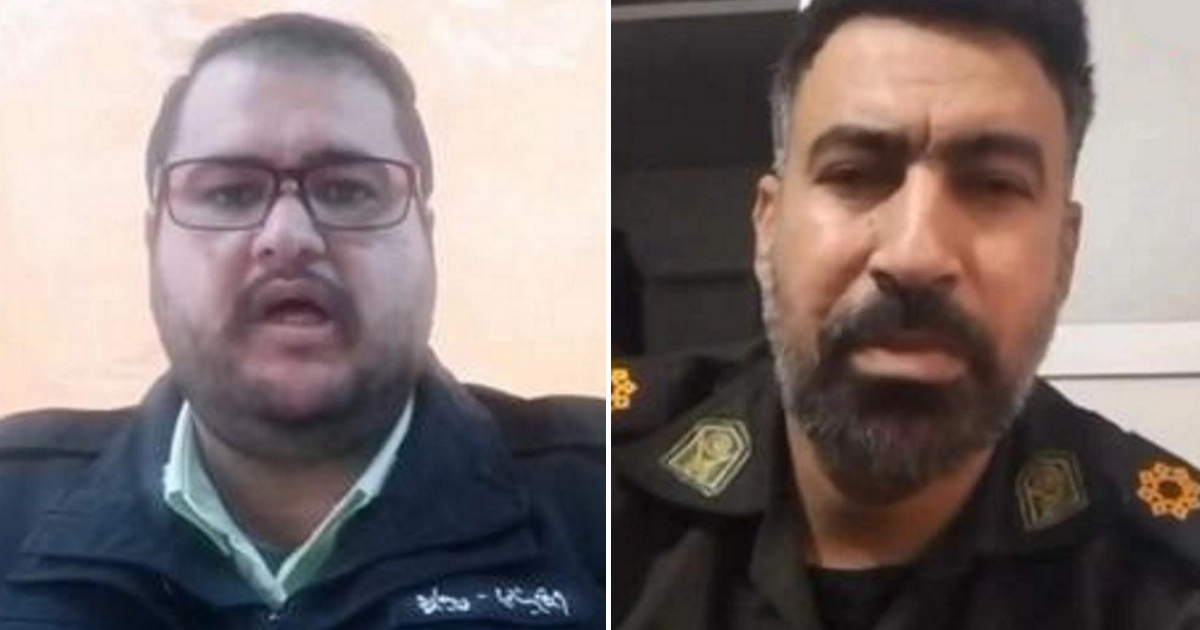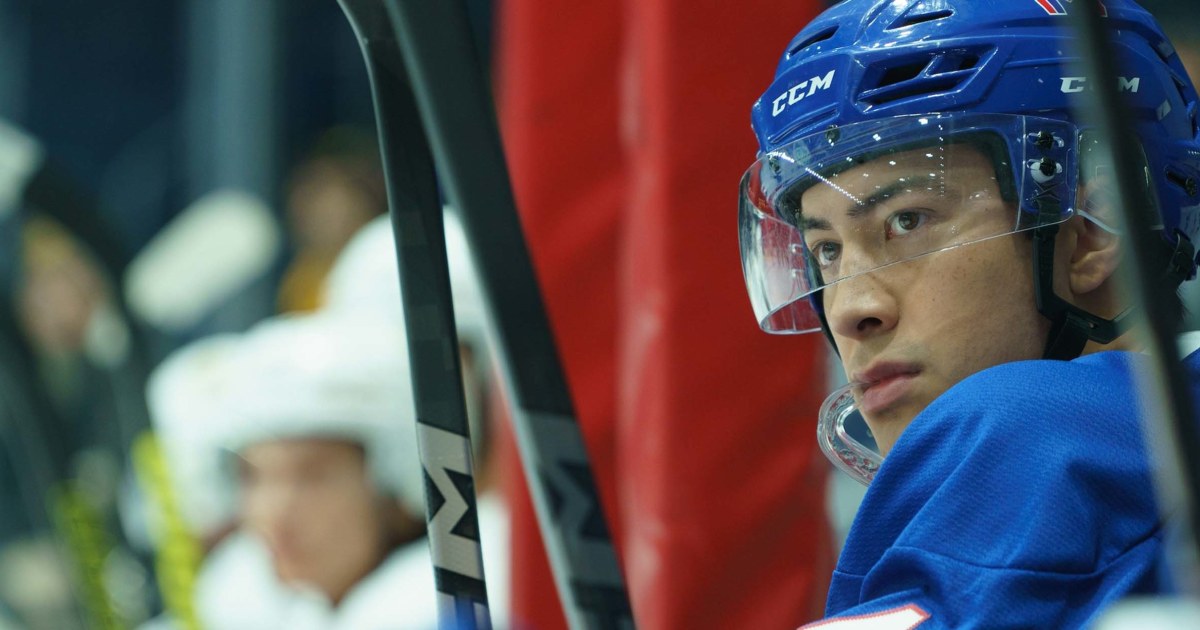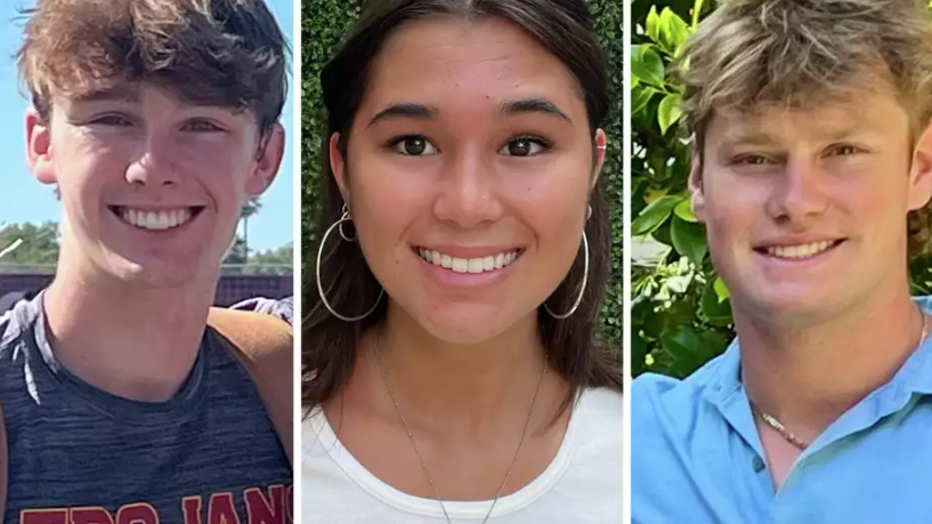Accessories may not get the same attention as cameras and lenses, but they are often the tools that keep photographers shooting smoothly. From memory card protection to power solutions and lens accessories, small upgrades can make a…
Blog
-

Dec. 27th: A 25-year-old Quirks & Quarks time capsule with science predictions for 2025
Quirks and QuarksTwenty-five years ago, Quirks & Quarks celebrated its anniversary by travelling forward in time — to 2025 — to find out how science had changed in the years since.
Encore presentation of Quirks & Quarks’ 25th Annivesary Show…
Continue Reading
-

Rare Iranian police videos protesting low wages spark public reaction
The Grand Bazaar, one of Tehran’s most important commercial and historic areas, is facing a crisis that has developed below ground rather than at street level.
Iranian media reported the discovery of excavations beneath the Azadi (Dastmalchi),…
Continue Reading
-

What Happens in the ‘Heated Rivalry’ Sequel, ‘The Long Game’?
Warning: This article contains light spoilers for the end of “Heated Rivalry.”
Enjoy your time at the cottage?
The “Heated Rivalry” finale officially hit HBO Max in the U.S. on Dec. 26, bringing fans of Canadian streamer Crave’s unexpected hit…
Continue Reading
-

Sun City West resident responds to rebuttal letter

The relentless rise of YouTube
Brittany Broski was working at a bank in Dallas in 2019 when she got her first taste of internet stardom. She had posted a brief, funny TikTok video of her reaction to tasting kombucha for the first time, and the clip rocketed around the world….
Continue Reading

The Best Integrated and Elegant Sports Watches of 2025
Watches with integrated bracelets and elegant-sports designs remain popular. While the hype seems to have cooled slightly, the category continues to be very competitive, but also creative. From big watchmaking brands…
Continue Reading

Apple seeks to appeal £1.5bn ruling it overcharged UK customers | Apps
Apple is seeking to overturn a landmark £1.5bn court ruling on behalf of millions of UK customers, which found the company overcharged them for years in its App Store.
The iPhone maker has applied to the court of appeal to challenge a verdict that campaigners heralded as the start of a “tidal shift against big tech”.
It is one of a cluster of cases heading towards trial in 2026 as consumers realise the mounting cost of paying up to 30% commission – what campaigners call the “Apple tax” – on apps and in-app purchases, which more people rely on for activities from fitness to dating.
The appeal, if allowed, involves one of several class action suits against Apple and Google in which consumers, small businesses and entrepreneurs are demanding over £6bn in combined compensation. The class action cases use an opt-out system that means millions of people can be represented at once in claims of breaches of competition law.
“It’s definitely a tipping point,” said Dr Rachael Kent, an academic at King’s College London who won the £1.5bn case against Apple on behalf of 36 million UK consumers. “People are pushing back against the harms from digital worlds, which they have to be living in and through every day and the financial implications of that,” she said.
Apple said most apps are subject to a 15% commission, and the App Store helps drive the UK’s digital economy. Photograph: Jakub Porzycki/NurPhoto/Shutterstock Kent added that the win in October still felt “a bit pinch me”. If Apple’s appeal fails, every person in the UK who made App Store purchases between 2015 and 2024 could be entitled to a payout.
In the suite of class action cases, Apple and Google are accused of overcharging British consumers and developers in their app stores and, in the case of Apple, of “trapping” and overcharging customers with its iCloud data storage service.
Instead of up to 30%, Apple should be charging commission of 17.5% when selling apps and 10% on in-app purchases, while app developers should pay 10%, the competition appeal tribunal found in Kent’s case.
Another of the cases is being brought by Barry Rodger, a law professor at the University of Strathclyde, on behalf of more than 2,000 app developers who he argues are collectively entitled to up to £1bn in compensation.
“Small and medium-sized app developer businesses have suffered as the result of excessive profiteering by the App Store and Google Play,” he said. His case alleges Google Play has charged “excessive, arbitrary and discriminatory commissions” against developers, with the makers of dating and games apps particularly affected.
His suit is expected to reach trial at the competitions appeal tribunal in October 2026, and will be jointly managed with a claim for about £1bn on behalf of 19 million Google Play customers, who are alleged to have been overcharged. That case is being brought by the consumer activist Liz Coll and accuses Google of “excluding competition and/or charging an unlawfully high level of commission on digital purchases”, breaching competition law.
Coll said: “These types of large collective proceedings are new in the UK, but I’m really excited about the potential of the Kent decision to not only make people aware they were paying too much for apps through opaque commission but also that there is now a clear route to getting that put right. Where we need consumers to get really active now is in claiming back the money they’re owed.”
A Google spokesperson said: “Android provides more choice than any other platform and our fees are the lowest of any major app platform. We’ll defend these cases vigorously.”
A class action has also been brought on behalf of Google Play customers. Photograph: Issei Kato/Reuters Google argues that the class action cases seek to upend a system that has lowered prices and increased choice and that, if successful, would make downloading and using apps on Android phones more complicated and less safe.
And in the largest of all the claims, November saw the consumer campaign group Which? announce a £3bn claim against Apple over its iCloud services, claiming it is “trapping” customers with Apple devices into using it.
Apple called the Which? claims unfounded and said no customers are required to use iCloud. The company said it strongly disagrees with the ruling in Kent’s case over the App Store, and the tribunal took a flawed view of the “thriving and competitive app economy”, with other platforms providing “vigorous competition”. It said most apps are subject to a 15% commission, and the App Store helps drive the UK’s digital economy, facilitating billings and sales of over $55bn (£41bn) in the UK in 2024.
Kent said that people are “waking up to the harms of digital life and how it can be detrimental mentally, physically and financially”.
“There is a tidal shift that is happening against big tech,” she said. “Consumers are looking at all of the tools that they have to use every day. Covid really accelerated our reliance on technology and many of us went from using five apps in a week to perhaps 10 apps in a day to manage food shopping, food delivery, retail, fitness and diet tracking, keeping in close communication with friends and family, much more social media, increased screen time.
“A big part of the last six years working the case has been about educating people that this is actually happening. That’s what tech giants and marketeers like Apple are so brilliant at. It’s creating an ecosystem where we are foreclosed into decision making and we don’t even realise that this is actually how it’s happening.”
Continue Reading

Surviving crises through humor in the award-winning book ‘The True True Story of Raja the Gullible’
SOMOS CONNECTICUT is an initiative from Connecticut Public, the state’s local NPR and PBS station, to elevate Latino stories and expand programming that uplifts and informs our Latino communities. Visit CTPublic.org/latino for more stories…
Continue Reading

NHTSA investigating Tesla Model 3 door releases following complaints
Door handles on a Tesla Model 3 in front of the company’s store in Colma, California, US, on Monday, Nov. 10, 2025. Tesla Inc. is working on a redesign of its door handles, which have drawn scrutiny over safety incidents that trapped passengers insid
PIEDMONT, Calif. – The National Highway Traffic Safety Administration has opened a defect investigation into Tesla’s Model 3 vehicles over the car door’s release and concerns the controls may not be easy to find in an emergency – the same concerns of Piedmont families whose college-age children died in a Cybertruck with the same type of door release.
Tesla Model 3 door handles
NHTSA’s Office of Defects Investigation opened the investigation on Dec. 23 after getting a complaint from a man in Georgia that called the mechanical door release “hidden, unlabeled, and not intuitive to locate during an emergency,” according to the filing. The filing references one incident involving a crash or fire, with one injury.
The agency said the probe covers nearly 180,000 model year 2022 Tesla Model 3 vehicles, where the chief complaint is that the “emergency egress controls are not readily accessible and clearly identifiable.”
Tesla Model Y door handles
This investigation follows another NHTSA inquiry stemming from nine examples of Tesla’s 2021 Model Y cars, where the agency reported parents not being able to get their children out of the back of the car, and they ended up breaking a window to get back in.
Based on NHTSA’s preliminary review, this condition appears to occur when the electronic door locks receive insufficient voltage from the vehicle.
Tesla response
Tesla did not immediately respond Friday to the latest NHTSA investigation.
But in September, Tesla design chief Franz von Holzhausen told Bloomberg’s Hot Pursuit! podcast that the company was looking to combine the manual and electronic release mechanisms in the doors, which are now separate, in order to make escaping the car easier and quicker in a “panic situation.”
“The idea of combining the electronic one and the manual one together into one button, I think, makes a lot of sense,” he said on the podcast. “That’s something that we’re working on.”
A closer look at Tesla Cybertruck’s design following death of 3 Piedmont students
Nearly a month after three college students died in a fiery Tesla Cybertruck crash in Piedmont, many questions still remain. We took a closer look at the car’s design and talked to experts about the car’s unique features.
Piedmont deaths in Cybertruck

(L-R) Soren Dixon, Krysta Tsukahara and Jack Nelson, all 2023 Piedmont High graduates, were killed in a crash in Piedmont on Nov. 27, 2024. Photo: City of Piedmont
The door handles are the subject of lawsuits filed by the parents of two college students who died in a fiery crash while they were passengers in a Tesla Cybertruck in Piedmont last year, just before Thanksgiving. The lawsuits allege the tricky design of the Cybertruck’s doors left the college students to die inside.
The families of Krysta Tsukahara, 19, and Jack Nelson, 20, have each filed separate lawsuits against Tesla.
Shortly after that fatal crash, KTVU took a closer look at the Cybertruck design, especially the issues with its electric doors and hard-to-break windows, exposing some of the same issues that the federal government is now investigating.
In a Cybertruck, the manual release for the door locks is a latch on the door in the front of the car by the window switches, and under a plastic well in the back “map pocket” of the car.
“It was clear to us that the door failed to operate because it lost power,” Roger Dreyer, the attorney for Krista’s parents, Noelle and Carl Tsukahara, said in a previous interview in October.
Nelson also survived the initial impact of the crash, his parents’ attorney, Matthew Davis, said at the time.
“His injuries were relatively minor,” Davis said. “What killed him was that he couldn’t get out of the car.”
A Bloomberg investigation this month found that 15 people have died over the last decade after being unable to open Tesla vehicle doors following a crash.
Continue Reading
